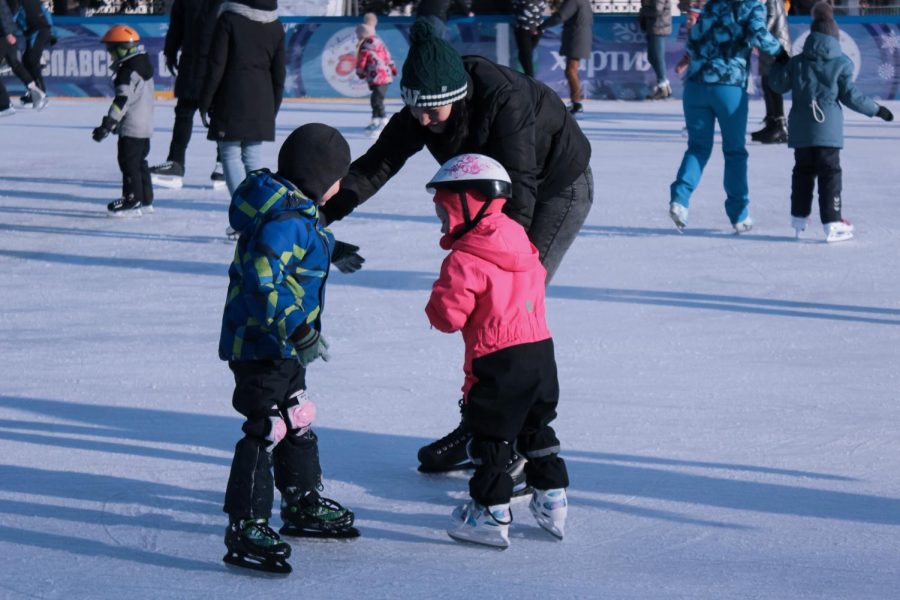Snow covered landscapes. Sledding down the side of a hill. And mornings so cold your face feels numb. Yes, it’s that time of year again! Whether you love it or hate it, winter is just around the corner, starting on Dec. 21.
But how bad, or dull, will this winter be compared to years past? Will Bucks battle the snow, or will this be a flake-less winter?
Many meteorologists and weather organizations have issued winter forecasts weeks in advance of the winter solecist, using a mix of computer model guidance, analog weather models, and climatological records.
The Philadelphia area including Bucks County typically sees about 19 inches of snow accumulation every year, according to data from The National Weather Service.
The National Oceanic and Atmospheric Administration, which is the parent organization of The National Weather Service, issued their predictions for the 2022-2023 winter season on Oct. 20.
According to NOAA, a La Niña will influence this winter for the third year in a row, which meteorologists describe as a “triple dip La Niña. “La Niña is characterized by unusually cold ocean temperatures in the Equatorial Pacific, compared to El Niño, which is characterized by unusually warm ocean temperatures in the Equatorial Pacific,” NOAA reports.
“Warmer-than-average temperatures are favored in the Southeastern U.S. and along the Atlantic coast,” said NOAA. This includes Bucks County, which has a 33 to 40 percent chance of above average temperatures, according to a graph associated with their forecast.
However, Accuweather has predicted that the Philadelphia area will receive between 14 and 20 inches of snow, which is more than we saw last year.
TV networks in Philadelphia have also made their own predictions on this winter. 6ABC, led by Chief Meteorologist Cecily Tynan, released their winter forecast on Friday, Nov. 18.
It is forecasted that the Philadelphia area will get 14 to 20 inches of snow this year, which is slightly below average. Tynan said that many of the big snow producers will stay just to our west, and we should expect most of our winter precipitation to be a mix of rain, snow and sleet.
As for temperatures, 6ABC says that we are in for a “roller coaster of temperatures”, with many days of either abnormally warm and abnormally cold temperatures.
FOX29 shared their winter forecast with their viewers. Meteorologist Sue Serio “predicts there will be 12 days with snow on the ground. Jan. 1st is expected to be the coldest day of the month with daytime highs in the mid to upper 30s and nighttime lows in the teens”.
FOX29 meteorologist Kathy Orr says that 19 inches of snow will hit our area this year, but this is higher than last year when we saw only 12.9 inches. FOX29 even went as far as to forecast that on Christmas Day there will be a 30 percent chance we will see snow on the ground.
In recent years, climate change has made winter forecasting quite hard and not that reliable due to its effects on typical patterns such as La Niña and El Niño.
Last year, now retired NBC10 meteorologist Glenn “Hurricane” Schwarts announced that their station would no longer be issuing a winter forecast. He told Philadelphia Magazine that “There’s no reason to do them at this point other than public demand.”
Schwartz pointed out how climate change is plaguing our winters. “Philadelphia’s winter is now almost five degrees warmer than it was in 1970, so it’s not the same climate anymore. How can I look back to 1970 as a comparison when I can’t even look back to 1990 anymore? We are living in a totally different world,” he said.
Meanwhile, The Old Farmer’s Almanac is forecasting a snow lover’s dream. They say that the Northeast Corridor will see below normal temperatures, and above normal snowfall. Meteorologists are quick to discredit Almanacs like these since they don’t provide a methodology as to how they make their forecasts.
Regardless of whether or not it heavily snows this year, you should always be prepared for the worst case scenario during a winter storm. And the best time to prepare is now, before the winter season gets in full swing.
According to The National Weather Service, everyone should prepare for the winter by doing the following.
- Keep extra food and water on hand such as dried fruit, nuts, granola bars, food for your pets, and other food requiring no cooking or refrigeration.
- Get an extra bottle of any medicines needed in case access to a pharmacy is cut off for a long period of time.
- Wear plenty of layers of clothes, heavy jackets, hats, gloves and scarves to prevent hypothermia in extreme cold.
- Keep an extra flashlight and batteries on hand.
- Make sure all Smoke detectors, CO detectors and fire extinguishers are in good working order.
- Have two first aid kits with you; one in your car, and one in your home.
- Make sure your car has a windshield scraper, brush, shovel and salt or sand to help you clear your car or driveway of snow and ice.
- Only drive during a snowstorm if there is an emergency.
- Consider purchasing a NOAA Weather Radio to inform you of the latest weather in case cell phone and television service becomes unavailable.
- Wrap pipes in aluminum foil to prevent bursting.
- Clear any ventilation pipes of snow as blocking a vent can cause a fire to start or prevent noxious fumes from escaping your home.
- If you have a generator, never run it indoors, and review proper safety precautions to prevent fires.


